Top 10 museums Rome. In this article you will find out about the 10 best museums in Rome, their opening hours, admission fees and where to find them. Rome has accumulated immense treasures in its three-thousand-year history, first as the center of the Roman Empire and then as the center of Christianity. Not surprising, therefore, that Rome is home to numerous museums that tell the story of the Eternal City. Since it is nearly impossible to visit all of Rome’s museums, I created this list of the 10 best museums in Rome.
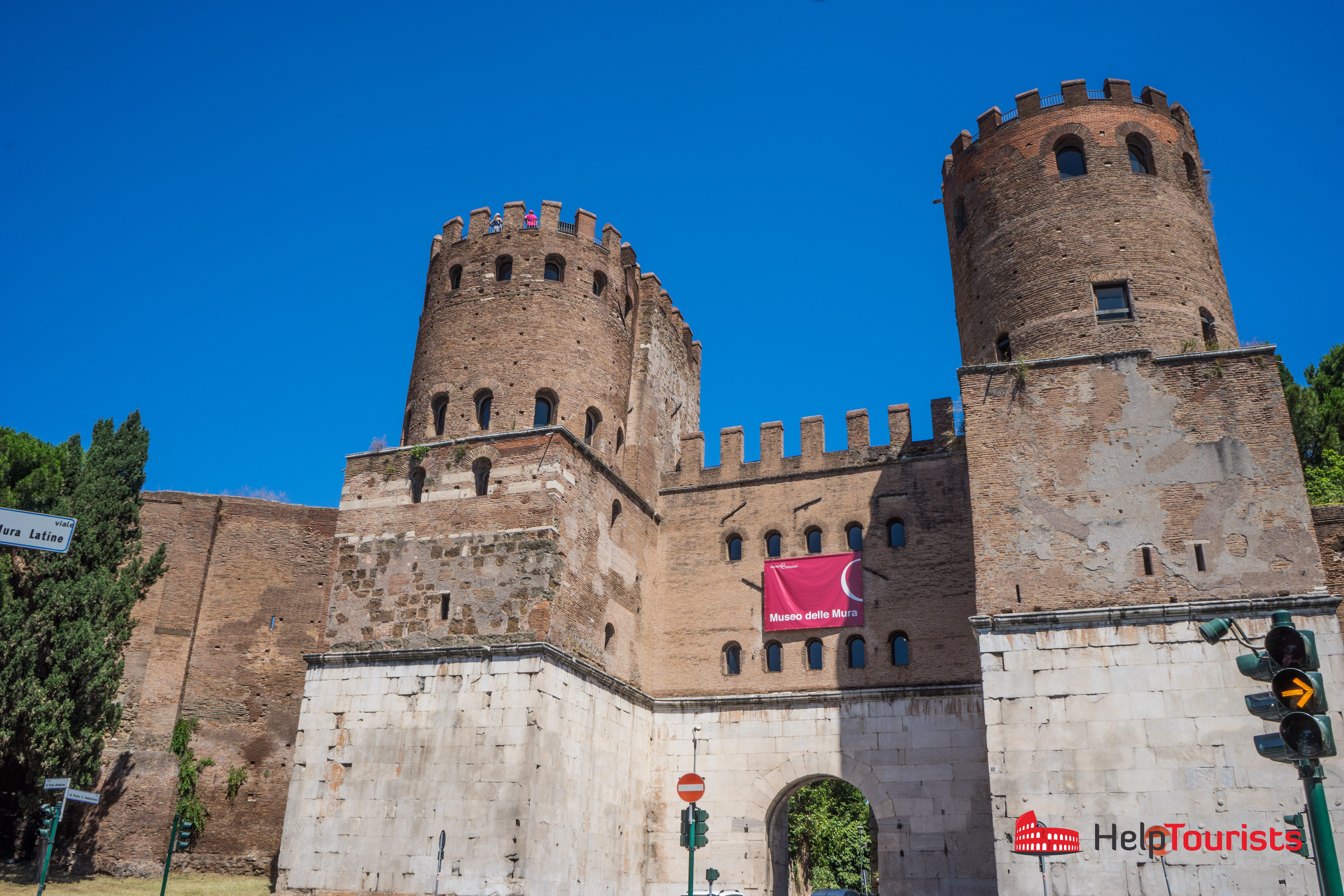
Museums Rome: Tips and information about the best museums in Rome
Spread over an area of just a few square kilometers you can visit a lot in Rome: archaeological remains dating back more than 2,000 years, treasures and curiosities sent to Rome by missionaries and adventurers from all over the world, artworks commissioned by the popes, palaces and churches built by emperors, kings and princes from all over Europe. A variety of art and culture spread over numerous museums. To make the selection a little easier, have a look at the 10 best museum in Rome here.
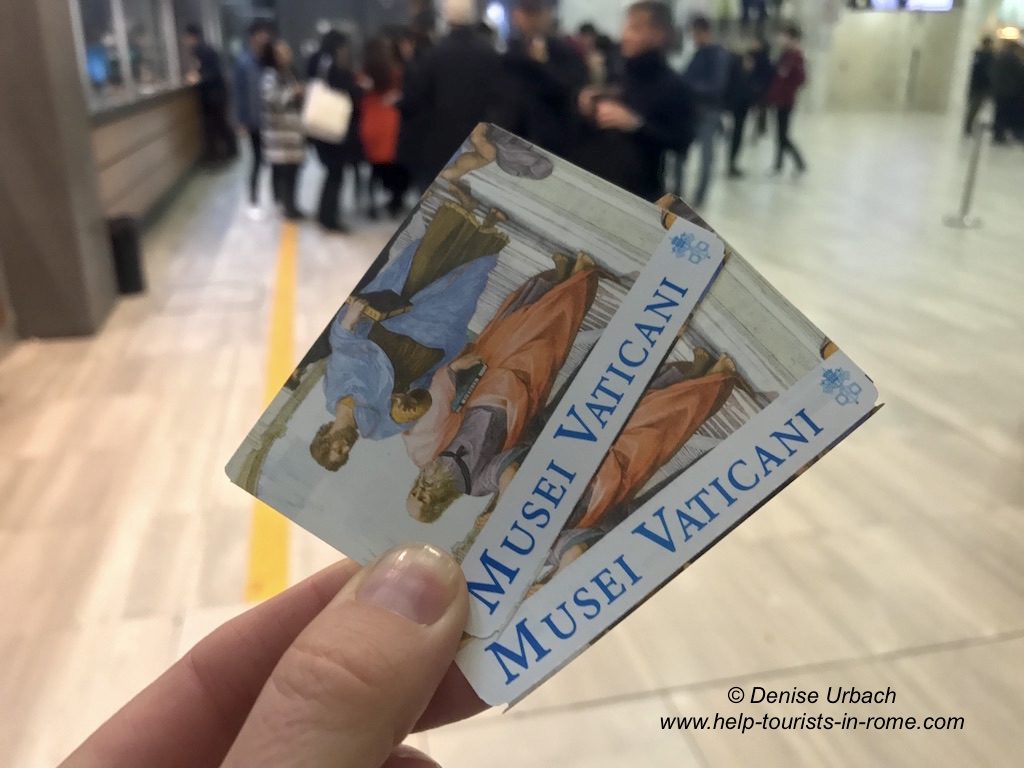
Top 10 Rome Museums: 10 museums in Rome that you should not miss
1. Top 10 Rome Museums: The Colosseum and the Palatine Hill in Rome
The Colosseum in Rome is Italy’s most visited museum. It was inaugurated in 80 A.D. and was used for games and matches until the 6th century. The Colosseum in Rome disposed of sophisticated stage equipment and the influx of up to 75,000 spectators was better regulated than in some modern stadiums. It is also part of the Unesco World Heritage.
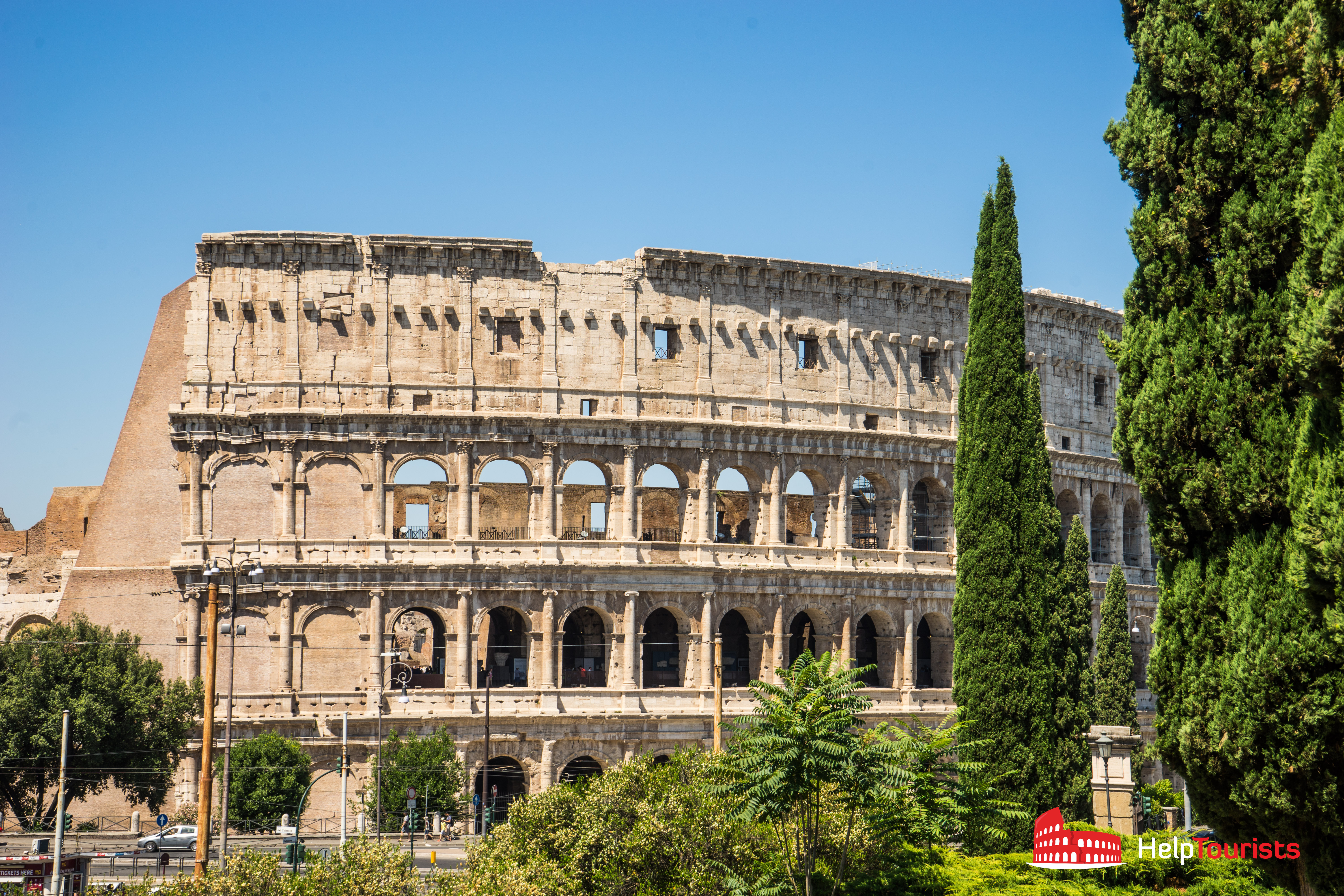
The archaeological area of the Colosseum including the Palatine Hill and the Roman Forum are an open air museum and can be visited with a single ticket. It is important to book tickets in advance to avoid having to wait in line for hours. The tickets have a fixed time for entry to the Colosseum. Tickets without time reservation are available from 2 pm on.
The tickets allow you to access the 1st and 2nd floor of the Colosseum. The Roma Pass and the Omina card also allow preferred entrance and access to the 1st and 2nd floor. Express tours start at the gladiators’ entries. This is also where guided tours through the underground part of the Colosseum, leading you through the supply rooms and past the ancient elevators, and tours through the upper 3 floors with panoramic view over Rome start. Some of these tours are sold out months in advance.
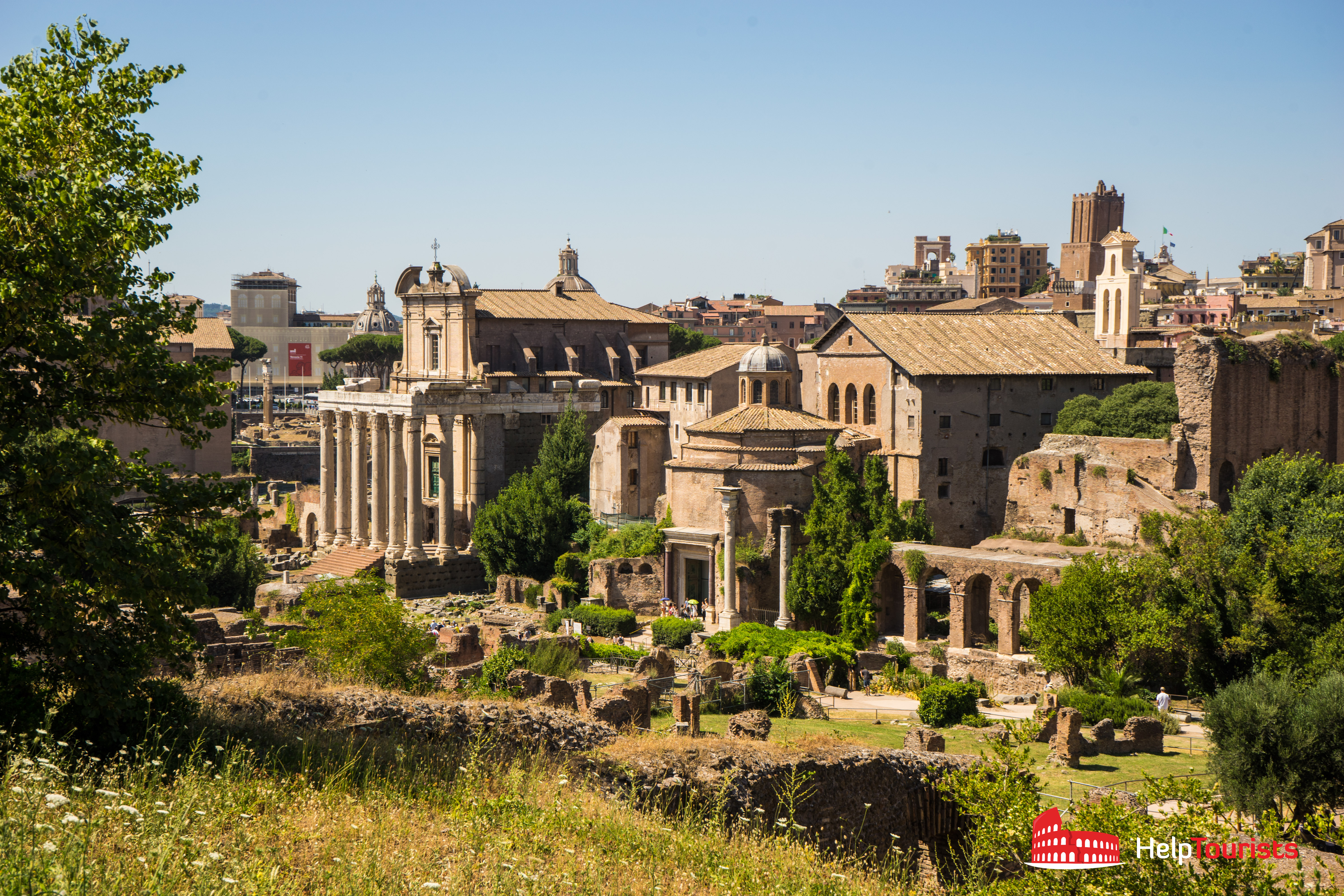
To visit the Palatine Hill I advise you to take the entry in Via di San Gregorio since it is less busy than the entry on Via dei Fori Imperiali. You can first mount the Palatine Hill and look down on the Circus Maximus and the Roman Forum before descending and visiting the Roman Forum and the Via Sacra.
Useful information
How to get to the Colosseum in Rome
The Colosseum is located in the archaeological area south of the city center. You can walk to the Colosseum from Piazza Venezia via Via dei Fori Imperiali, from the Circus Maximus via Via di San Gregorio. By public transport you can take the metro B and the tram line 3 to the Colosseum. All hop-on hop-off buses stop at the Colosseum.
Admission fees to the Colosseum in Rome
Admission to the Colosseum in Rome is 12 euros for adults. In addition, visitors have to pay a reservation fee of 2 euros. Teenagers under 18 benefit from free access to the Colosseum and European students under 25 only have to pay a reduced entry fee of 7,50 euros. Owners of the Roma Pass also benefit from the reduced admission fees once they have used all their free entry vouchers.
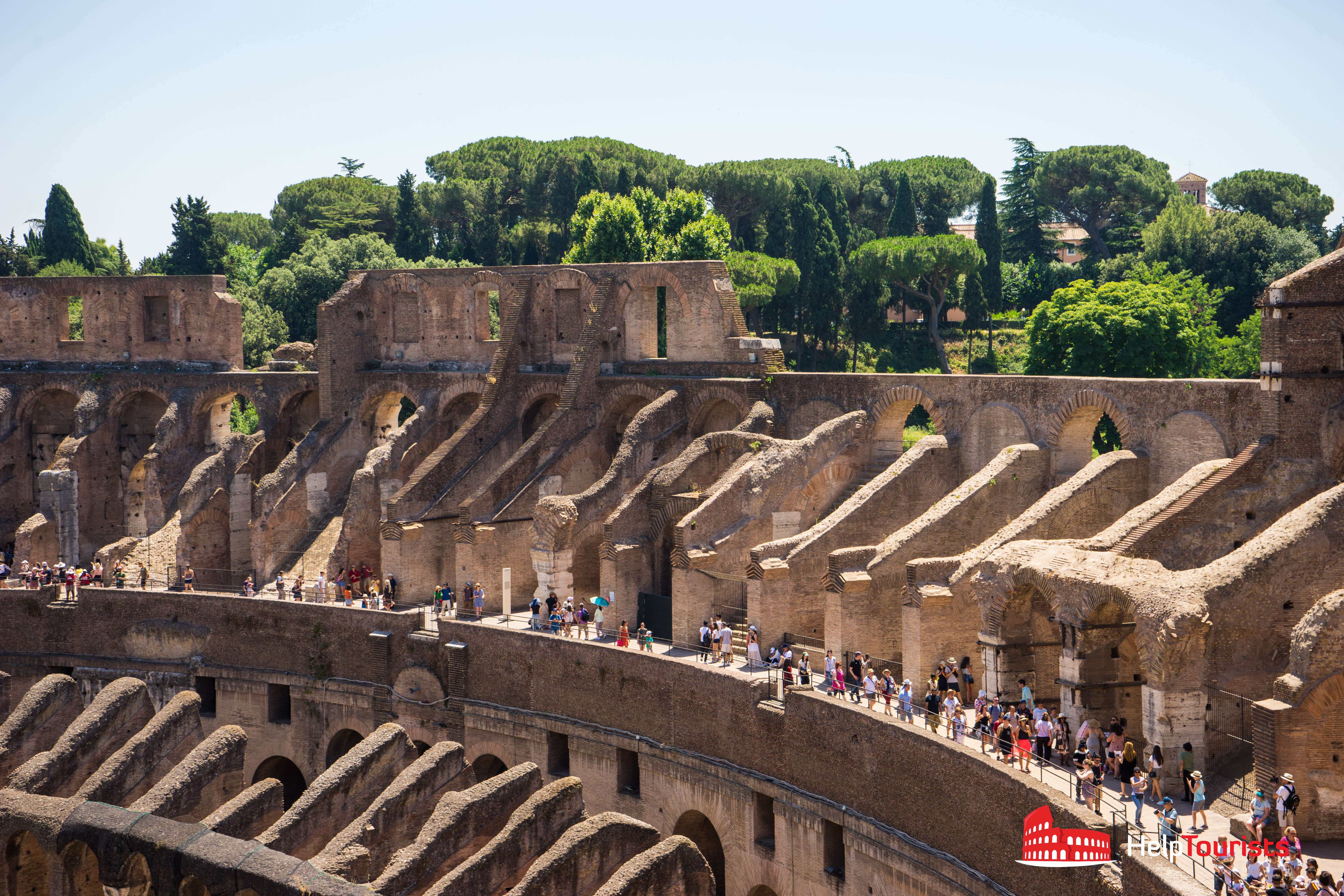
Opening hours of the Colosseum in Rome
The Colosseum opens daily at 8:30 am. Depending on the season it closes between 4:30 pm and 7:15 pm. Last admission is one hour before closing. Guided tours at night are also available, but only upon pre-booking.
2. Top 10 Rome Museums: The Vatican Museums in Rome
The Vatican Museums in Rome count up to 18 million visitors a year and is therefore the 5th most visited museum in the world. The Vatican Museums are located inside Vatican City. Vatican Museums were founded by Pope Julius II. in 1506. They are simply enormous in size, disposing of countless halls adding up to an overall length of 7 km and the Sistine Chapel.
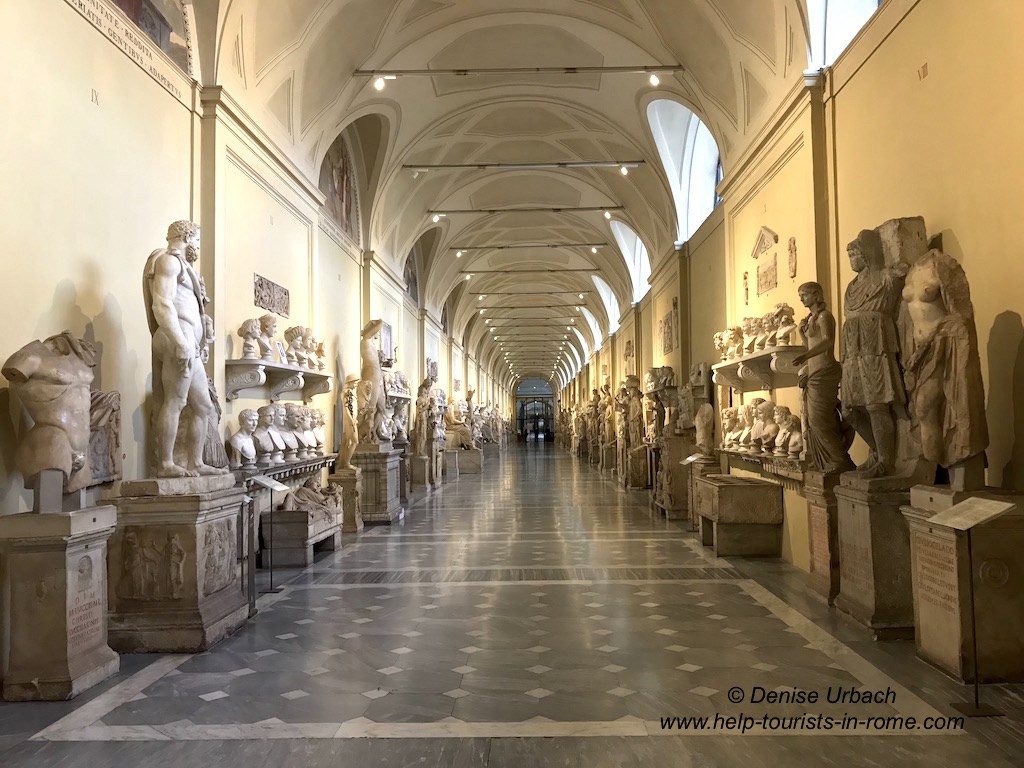
Again, it is very important to book tickets in advance. The Vatican Museums are so busy every day that there is a constant pushing around of people and large crowds trying to get the best views on the exhibits.
My advice to you: book a guided tour early in the morning before the crowds arrive to the Vatican Museums. Many guided tours include the visit of St Peter’s Basilica which allows you to take a passageway directly from the Sistine Chapel to the Basilica. This passageway is reserved to guided groups. Visiting the Vatican Museums on a Friday evening is also a good idea, since it is a lot less crowded. However, St Peter’s Basilica is closed in the evening.
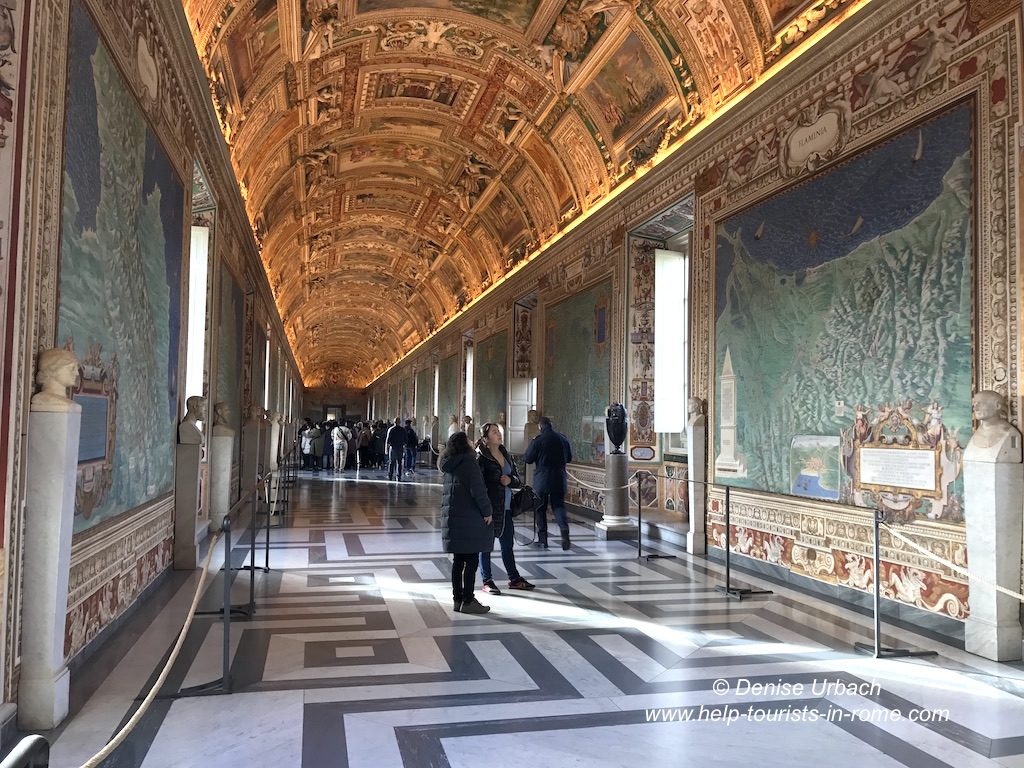
The Omina card includes preferred entrance to the Vatican Museums.
Useful information
How to get to the Vatican Museums in Rome
The Vatican Museums are located north of St Peter’s Basilica. The entry is on Viale Vaticano. When taking the metro, get off at the station Cipro, then walk for about 650 meters via Piazza Maria delle Grazie and Via Vittor Pisani. The buses of the line 49 stop directly in front of the museums.
Admission fees to the Vatican Museums in Rome
Admission to the Vatican Museums in Rome is 17 euros, plus 4 euros reservation fee. There is a reduced entry rate for children and teenagers between 6 and 18 and students under 25 at 8 euros, plus reservation fee. School classes only pay 4 euros entry fee and 2 euros reservation fee. Children under 6 and people with a degree of disability of more than 74% can visit the Vatican Museums for free. The Vatican Museums in Rome offer free access to everyone on the last Sunday of each month.
Opening hours of the Vatican Museums in Rome
The Vatican Museums in Rome are open from Monday to Saturday from 9 am to 6 pm, entries close at 4 pm. On the last Sunday of each month the museums are open from 9 am to 2 pm, the entry closes at noon.
3. Top 10 Rome Museum: The Capitoline Museums in Rome
The Capitoline Museums in Rome extend over an exhibition area of almost 13 000 m². They were made accessible for the public in 1734 by Pope Clement XII and are hence the world’s oldest public museums. Originally the museums consisted of a collection of sculptures and an art gallery. Its collection was extended with time and in the 20th century pieces from excavations were added. The most important piece of the collection is the original equestrian statue of Marcus Aurelius. The statue on Capitol Square only is a copy.
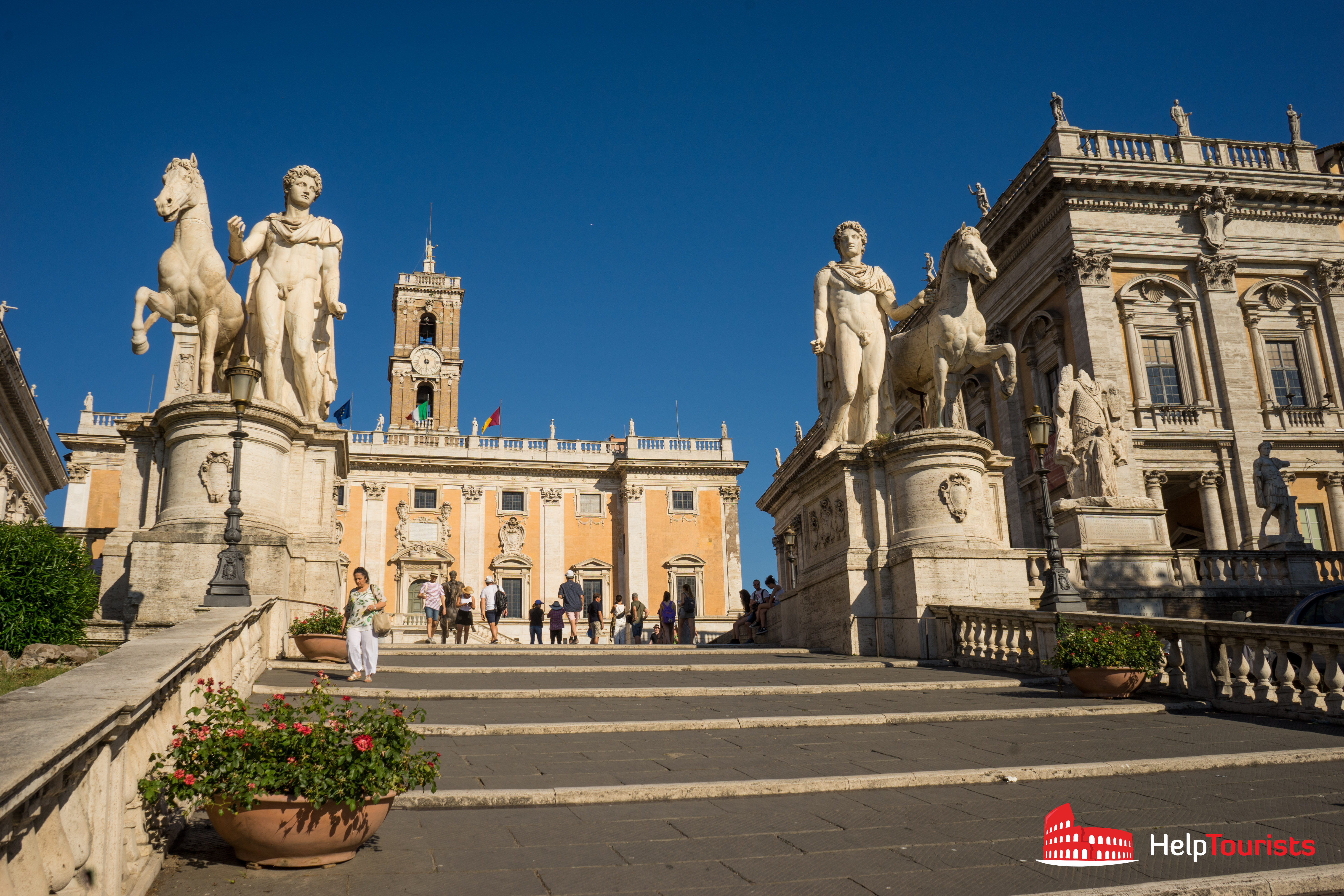
As you ascend the broad staircase to the Capitol, you will see two palaces, to the right and left, Palazzo dei Conservatori and Palazzo Nuovo. These two palaces house the Capitoline Museums. Straight on the square is the Senate Palace, seat of the mayor and the City Parliament. In the Palazzo dei conservatori, the founding treaty of today’s EU was signed on the 1st floor in 1957.
In the halls of the museum you will find numerous murals, paintings and statues, including the wolf, symbol of Rome.
If you go to the end of the palace, you should definitely make a detour to the cafeteria, which is located on the 2nd floor. There you will find a terrace with a wonderful view over the city. The opposite hill is the Gianicolo where you can see a lighthouse. He was given to the Romans by Italians having emigrated to Argentina. On the left you can see the equestrian statue of the freedom fighter Garibaldi, who contributed significantly to the emergence of the Italian Republic.
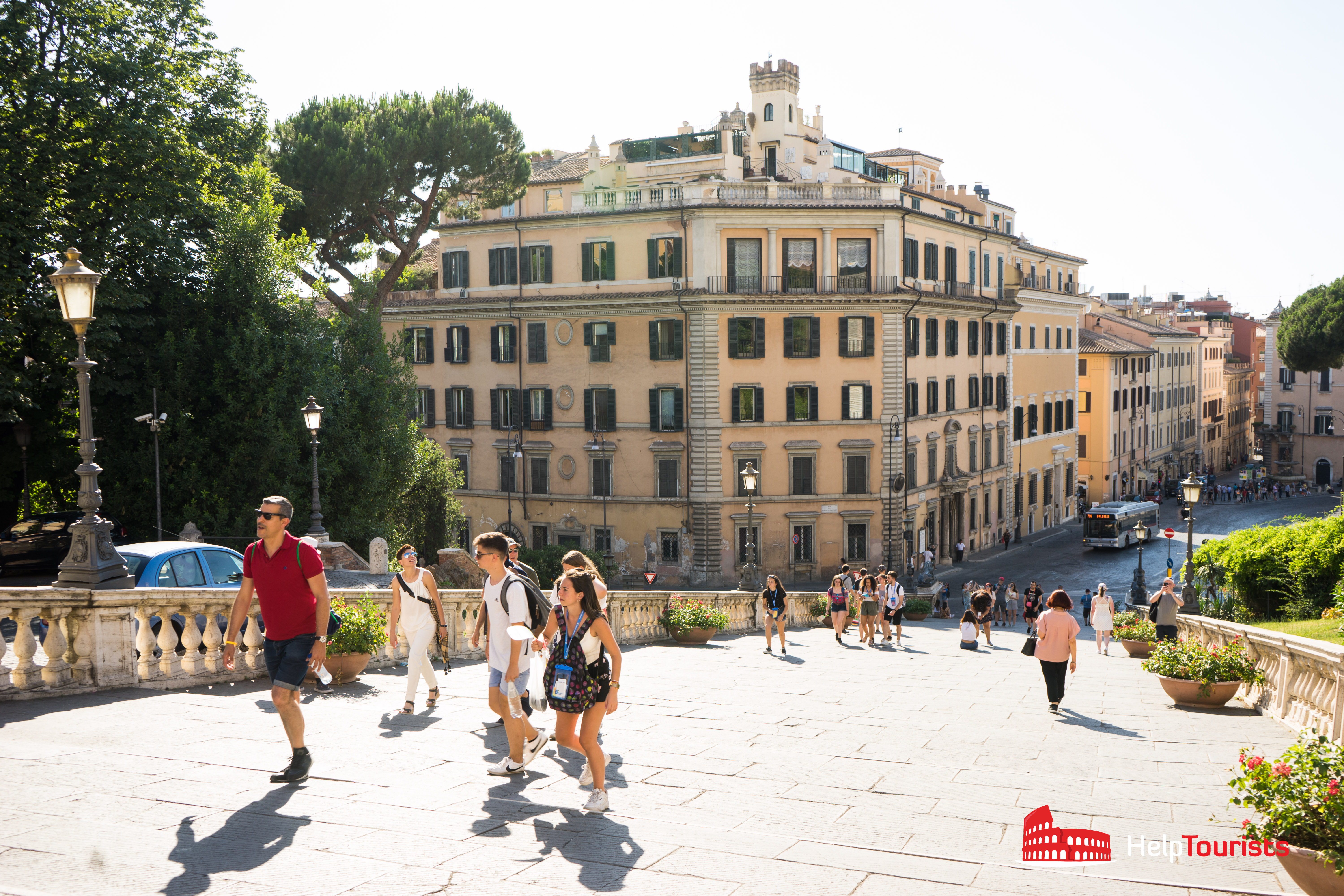
If you are not tired yet, you can visit the Palazzo Nuovo after the Palazzo dei Conservatori. There you will find numerous other rooms with collections of antiquity.
Useful information
How to get to the Capitoline Museums in Rome
All Hop-on hop-off buses stop near the Capitol. Several public buses and the tram line 8 stop at the nearby Piazza Venezia. Both Cavour and Colosseo, metro stops on line B, are only about 1 kilometer away from the Capitol.
Admission fees to the Capitoline Museums in Rome
Admission fee to the Capitoline Museums in Rome is 15 euros. Reduced admission costs 13 euros and is valid for young people from 6 to 18 years old and for visitors with a valid Roma Pass, when the free admission with the Roma Pass is used up. Children under the age of 6, school groups and inhabitants of the twin city of Paris benefit from free admission.
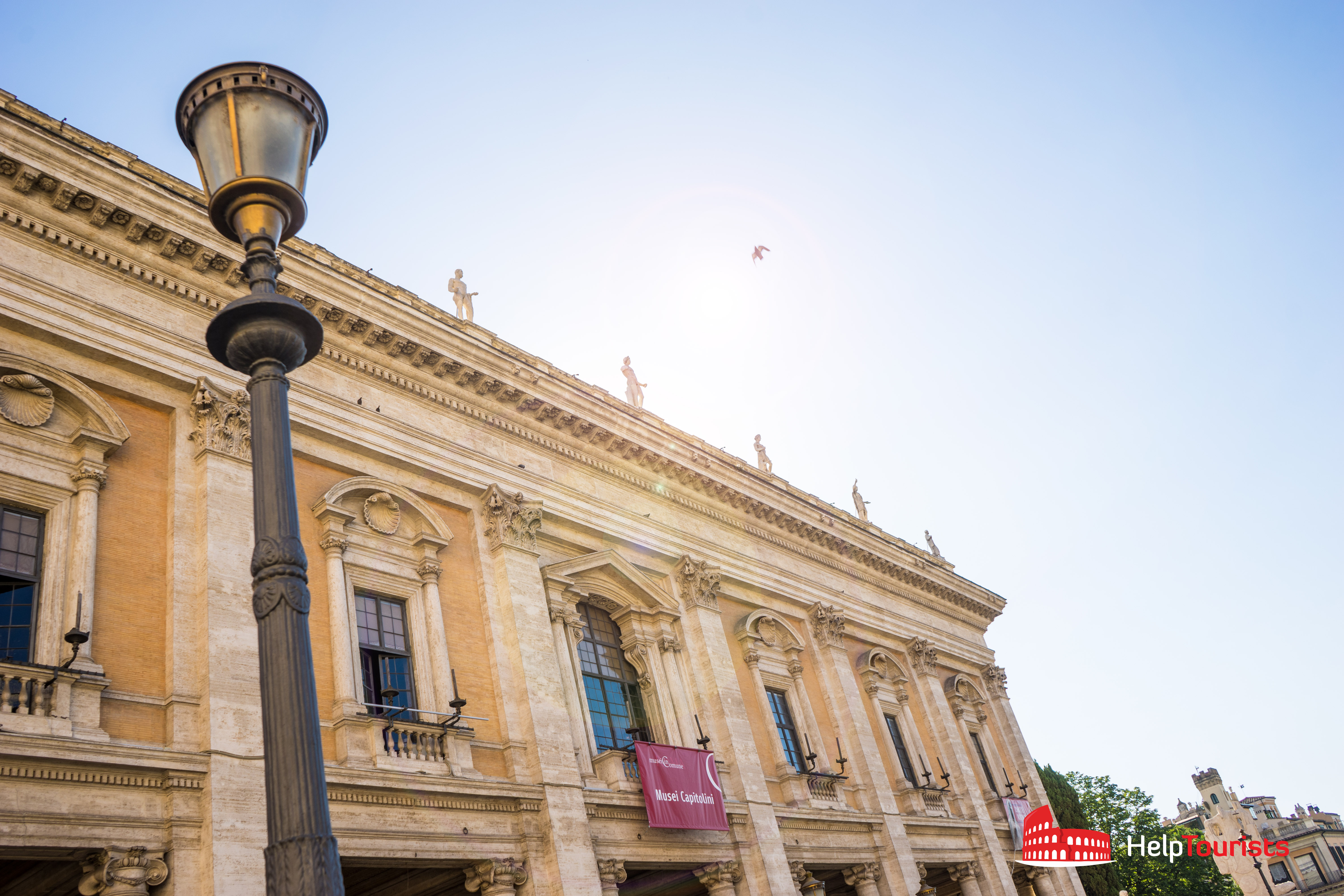
Opening hours of the Capitoline Museums in Rome
The Capitoline Museums in Rome are open from 9:30 am to 7:30 pm. On the 24th and the 31st of December the museums will close at 2 pm. The ticket office closes one hour earlier. The Capitoline Museums stay closed on the 1st of January, the 1st of May and the 25th of December.
4. Top 10 Rome Museums: Castel Sant’Angelo in Rome
The Castel Sant’Angelo in Rome was built as a tomb by Emperor Hadrian in 125 AD. From the windows of Castel Sant’Angelo in Rome and from the roof you have a magnificent view over the city of Rome and the Vatican.
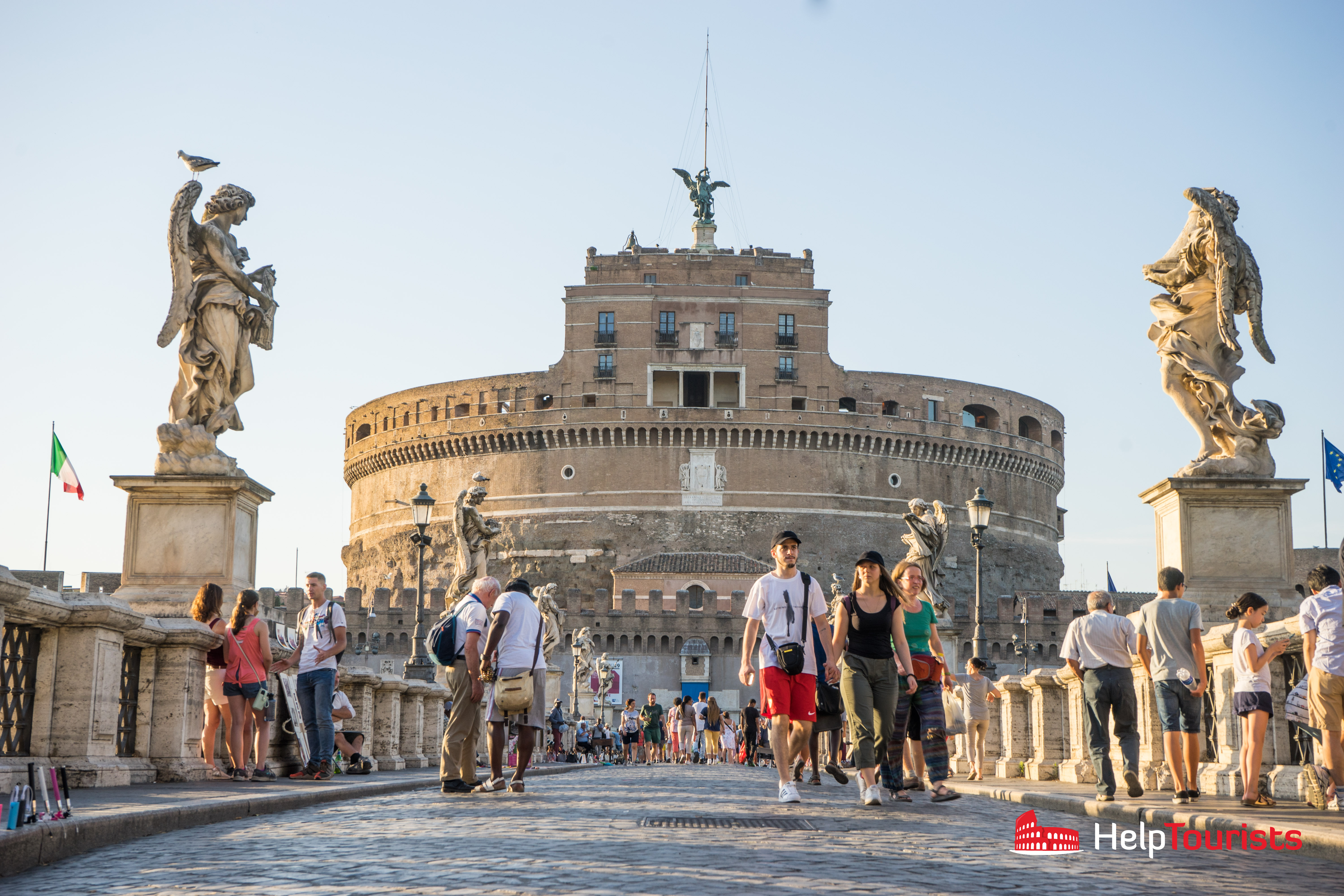
In Ancient Rome, the area around the Vatican Hill was outside the city and served as a burial ground. Thus, after his execution, Peter the apostle was buried on the Vatican Hill where later on St Peter’s Basilica was built. The mausoleum of Hadrian was also located in this burial ground. Over the centuries it became the Castel Sant’Angelo. The Castel Sant’Angelo in Rome served to defend the Vatican and, in an emergency, the popes retreated through a secret corridor, the “passetto”, to Castel Sant’Angelo.
There will most likely be long waiting lines in front of the Castel Sant’Angelo. The Roma Pass and the Omina Card grant you preferred entrance to the museum.
Twice a day the Castel Sant’Angelo offers guided tours through the “passetto”. They take place at 10 am and at 4 pm. The tickets are only available at the ticket office and tours are only available for 15 people max. at a time. Be there early if you want to participate in the guided tour through the passetto.
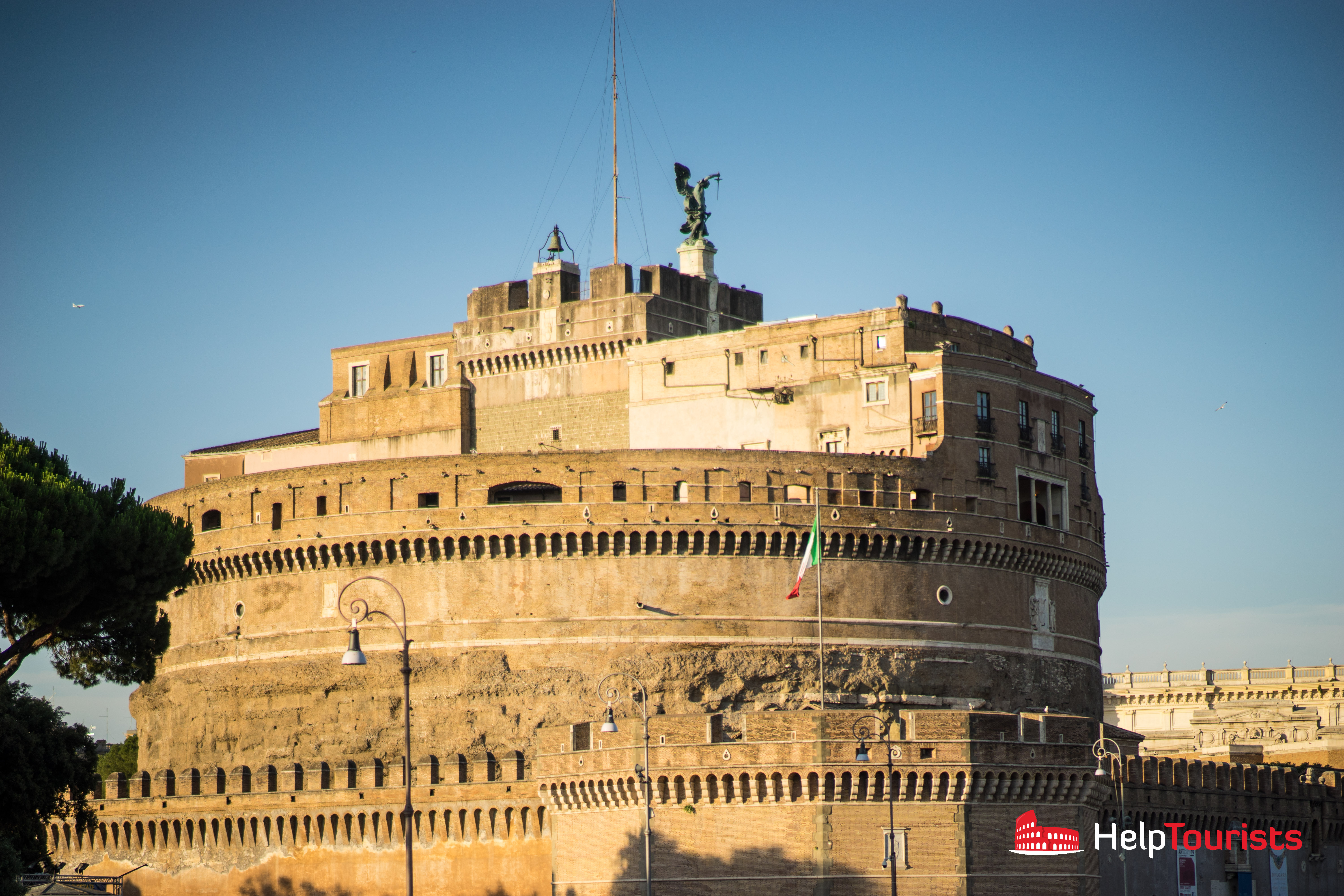
In Castel Sant’Angelo you will find various collections, antique weapons, ceramics, sculptures and pictures. The halls of the castle are richly decorated.
Useful information
How to get to the Castel Sant’Angelo in Rome
All hop-on hop-off buses stop next to the Castel Sant’Angelo. The bus lines Ponte Vittorio Emanuele 34, 40, 46, 62, 54, 190F, 916, 982, N5, N15, N20, and the line Lungotevere 280 also take you to the Castel Sant’Angelo in Rome. By foot you can reach the Castel Sant’Angelo via Via della Conciliazione or starting at Piazza Navona via Via dei Coronari.
Admission fees to the Castel Sant’Angelo in Rome
For adults admission to the Castel Sant’Angelo in Rome is 14 euros. Young people until 18 years old enjoy free admission and European students until the age of 25 only pay 7 euros admission fee. The reduced entrance fee also applies to owners of the Roma Pass once they have used up all the free entrance vouchers. In case of temporary exhibitions admission fees might be higher. The price to participate in the guided tour through the passetto is 5 euros, and 2,50 euros for people qualifying for reduced admission fee. Admission is free for all visitors on the 1st Sunday of each month.
Opening hours of the Castel Sant’Angelo in Rome
The Castel Sant-Angelo is open daily from 9 am to 7:30 pm, on some summer days it even stays open until midnight. The Castel Sant’Angelo remains closed on the 1st of January, the 1st of May and the 25th of December.
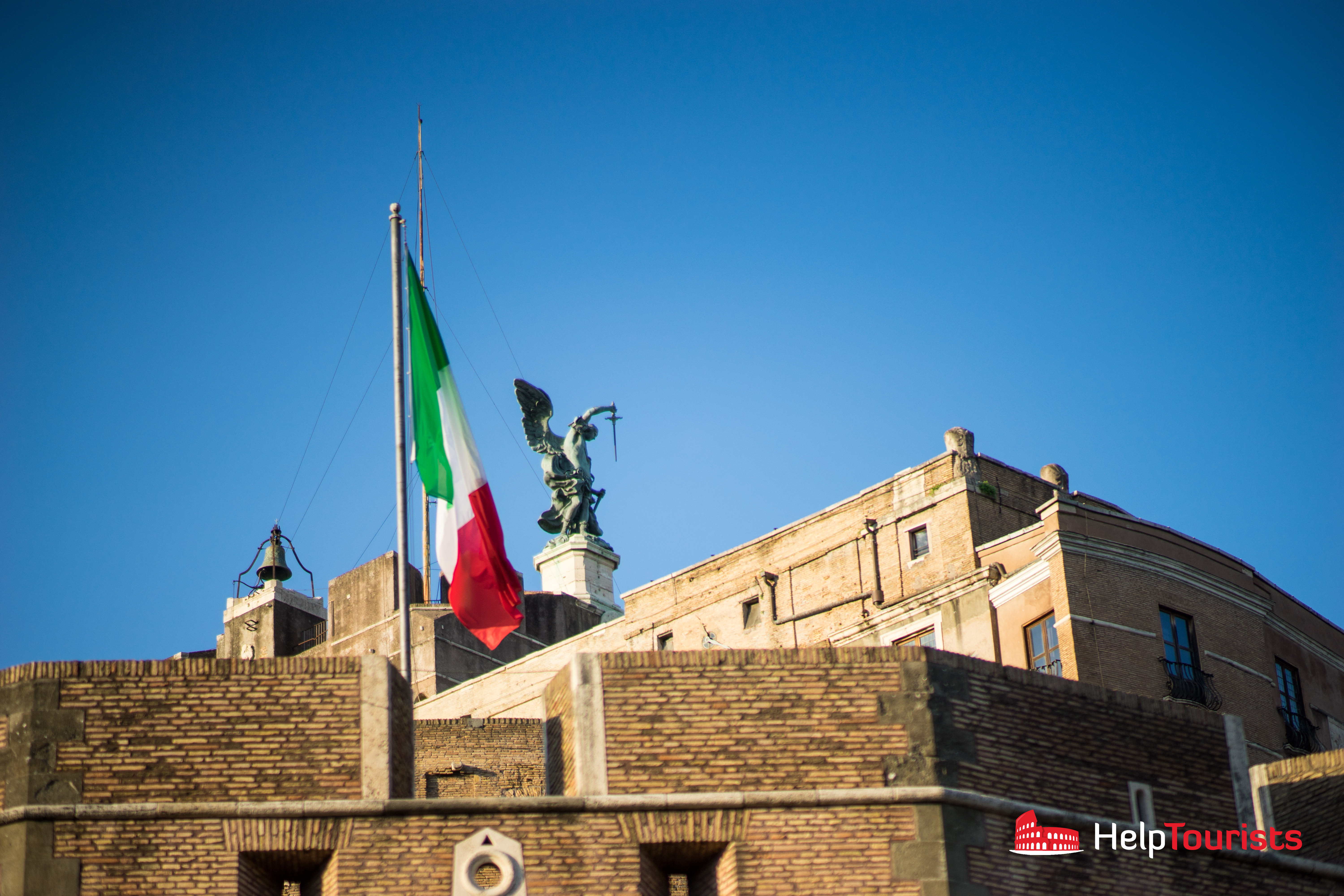
5. Top 10 Rome Museums: Galleria Borghese in Rome
The Galleria Borghese in Rome is one of the most popular museums in Rome. You will find art works of Gian Lorenzo Bernini, Agnolo Bronzino, Antonio Canova, Caravaggio, Raffaello, Perugino, Lorenzo Lotto, Antonello da Messina, Cranach, Annibale Carracci, Pieter Paul Rubens, Bellini and Tiziano here. Its collection of Bernini statues and Caravaggio paintings is unique in the world.

The Galleria Borghese looks back on an interesting history. It was built at the end of the 16th century by the Borghese family, who wanted to display their wealth. The family concentrated all their art collections, which were already in the family possession.
In 1803, Camillo Borghese married the sister of Napoleon I, Paolina. The reclining Paolina as Venus Victrix is one of the highlights of the collection. The paintings of Caravaggio and the sculptures of Bernini, the robbery of Proserpina, are also very impressive.
You can only visit the Galleria Borghese in Rome with a reserved ticket. The Roma Pass and the Omina card also allow access to the Galleria Borghese. To make a reservation call the phone number +39 06 32810.
Useful information
How to get to the Galleria Borghese in Rome
The villa is located on the northern edge of Villa Borghese near the Bioparco (zoo). Buses passing through Villa Borghese are lines 61, 89, 120F, 150F, 160, 490, 495 and N1. You will also find the tram stop Bioparco on lines 3 and 19. By metro you will only get to Piazza di Spagna or Piazzale Flaminio from where you will have to walk through Villa Borghese.
Admission fees to the Galleria Borghese in Rome
Admission fee to the Galleria Borghese in Rome is 13 euros, plus 2 euros reservation fee. Young people under the age of 18 are exempt from a admission fee, European students under 25 pay a reduced entrance fee of 6,50 euros plus 2 euros reservation fee.
Opening hours of the Galleria Borghese in Rome
The Galleria Borghese in Rome is open daily from 9 am to 7 pm and only accessible upon reservation. The reservation must be made for a time frame of 2 hours starting either at 9 am, 11 am, 1 pm, 3 pm or 5 pm.
6. Top 10 Rome Museums: Galleria Spada in Rome
The Galleria Spada in Rome is located in Palazzo Spada, where the Council of State is based, too. This palace was built in 1540 by Cardinal Capodiferro. Galleria Spada in Rome exhibits works from the 16th and 17th centuries in four halls. The paintings are by Guido Reni, Tiziano, Guercino, Rubens, Hans Durer, Caravaggio, Domenichino, Annibale Carracci, Salvator Rosa, Parmigianino, Francesco Solimena and Artemisia Gentileschi.
The highlight of the Galleria Spada is an optical illusion built by Borromini. He has built an eight-meter-long corridor with an optical illusion of perspective so that it appears 37 meters long. On the first floor of the gallery is a collection of paintings and sculptures.
The entry fee to the Galleria Spada is quite cheap and it is not worth spending a free entrance voucher of the Roma Pass. With the Roma Pass and the Omnia Card you can buy the tickets at a reduced price.
Useful information
How to get to the Galleria Spada in Rome
The Galleria Spada in Rome is located on Via Capo di Ferro. It is only accessible by foot. Landmarks are the French Embassy Palazzo Farnese. From there take the Vicolo dei Venti. From Campo de ‘Fiori take Via dei Balestrari, from the Sixtus bridge take Via Giulia and then to your right Vicolo del Polverone.
Admission fees to the Galleria Spada in Rome
Admission to the Galleria Spada in Rome is 5 euros for adults. Adolescents up to the age of 18 enjoy free admission, students from the EU up to the age of 25 pay a reduced entrance fee of 2.50 Euro. Admission is free on the 1st Sunday of the month.
Opening hours of the Galleria Spada in Rome
The Galleria Spada in Rome opens its doors Wednesday through Monday from 8:30 am to 7:30 pm and is closed on Tuesdays. Galleria Spada is closed to visitors on the 1st of May and on the 25th of December.
7. Top 10 Rome Museums: The Stadium of Domitian in Rome
The Stadium of Domitian in Rome is a good example of how Rome has changed over the centuries. In the center of the entertainment district of ancient Rome between spas and temples 30,000 spectators were able to participate in the competitions of athletes.
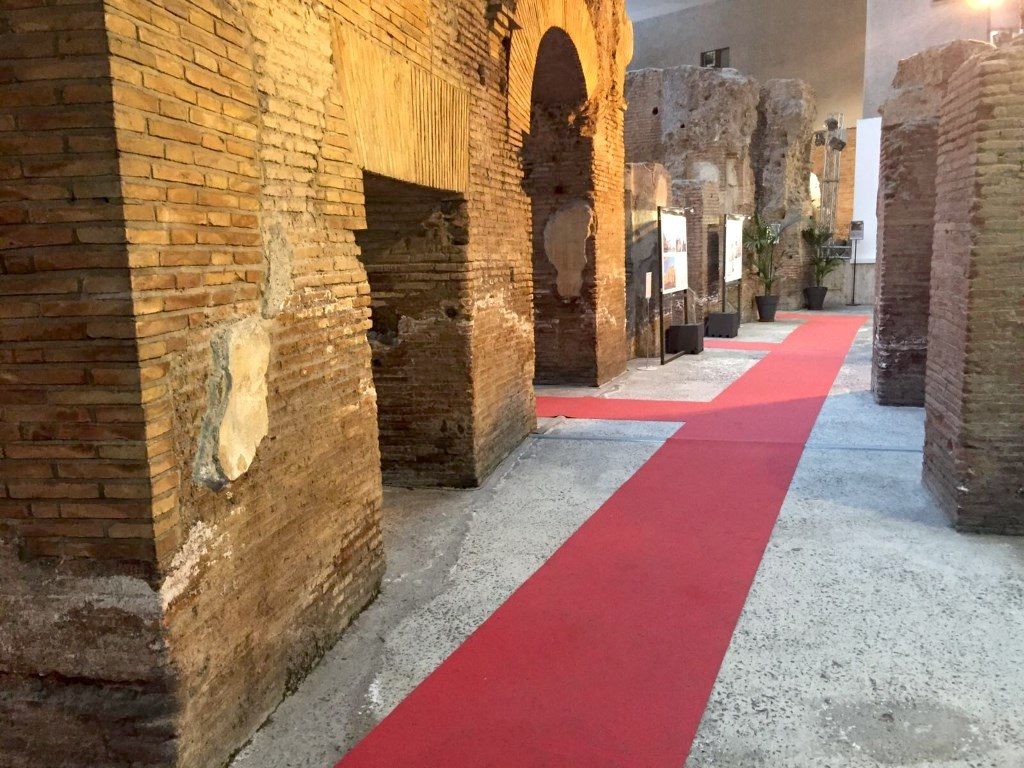
In 85 BC Emperor Domitian had an athletics stadium on the Campus Martius built. Today Piazza Navona is located there and the square still has the shape of the stadium. Remains of the stadium are still visible in the underground part of the buildings surrounding Piazza Navona. You have the opportunity to visit such excavations and to see a model of the stadium.
Useful information
How to get to the Stadium of Domitian in Rome
This museum is located at the back of the left arch of Piazza Navona. The entrance is on Via di Tor Sanguigna, opposite the Hotel Raphael. Zanardelli is the nearest bus stop, where the buses 30, 70, 81, 87, 492, 628, N6, N7 and N25 arrive.
Admission fees to the Stadium of Domitian in Rome
Entrance to the Stadium of Domitian in Rome is 8 euros including an audioguide. Reduced admission is available for young people aged 12 to 18 years, over 65s, persons with valid Roma passport, Big Bus customers and persons with disabilities. Children up to 12 years old enjoy free entry.
Opening hours of the Stadium of Domitian in Rome
The Stadium of Domitian is open daily from 10 am to 7 pm, Saturdays until 8 pm.
8. Top 10 Rome Museums: The Baths of Diocletian and the Palazzo Altemps in Rome
The Baths of Diocletian in Rome were once the largest spas of ancient Rome. They were inaugurated in 306 and served the surrounding densely populated residential areas. The entrance hall of the thermal baths was On today’s Piazza della Repubblica. It is called the Exedra, whose shape can still be well recognised on the semicircle of today’s square. Built into the thermal baths was the freely accessible church of Santa Maria degli Angeli e dei Martiri.
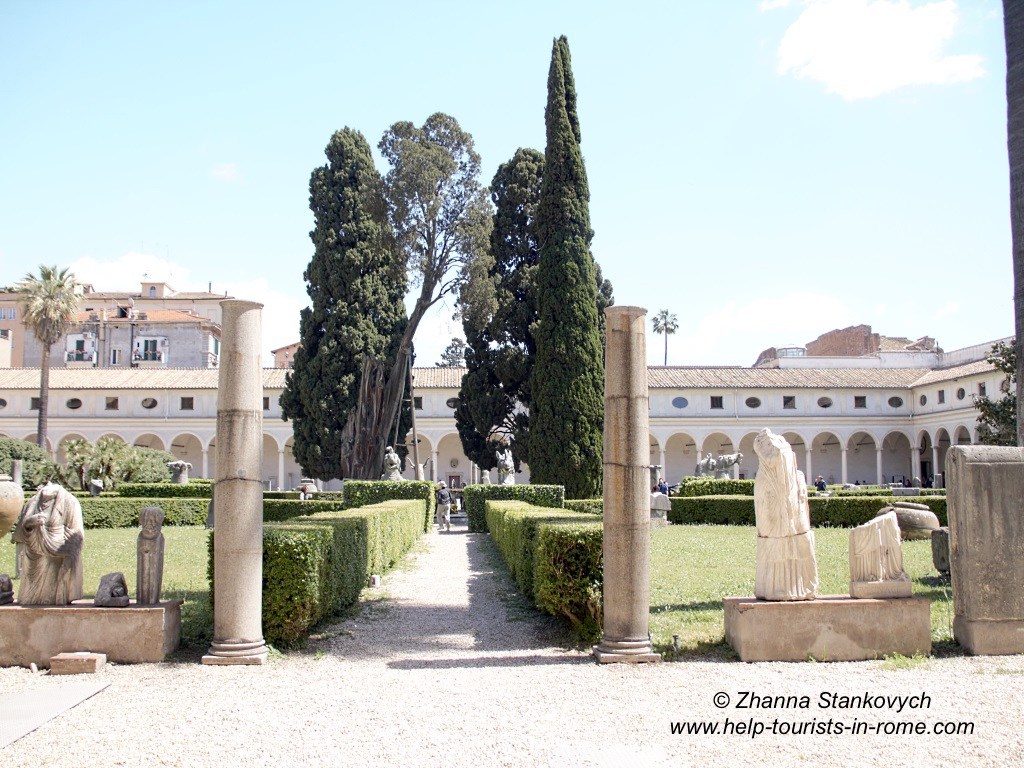
The Baths of Diocletian are part of the Roman National Museums. With just one ticket, you can visit four museums: the Baths of Diocletian, the Palazzo Massimo, the Palazzo Altemps and the Crypt Balbi.
The Palazzo Altemps in Rome, just across from Piazza Navona, is dedicated to the history of collecting and shows antique exhibits. The Crypt Balbi is located on the edge of the ghetto, where a Roman theater, crafts and monastic gardens were dug up in various layers under a monastery.
Definitely worth seeing are the baths of Diocletian. They are located opposite Termini Central Station. They were a huge bathing facility in antiquity. Michelangelo later built a cloister where you can relax when the weather is good.
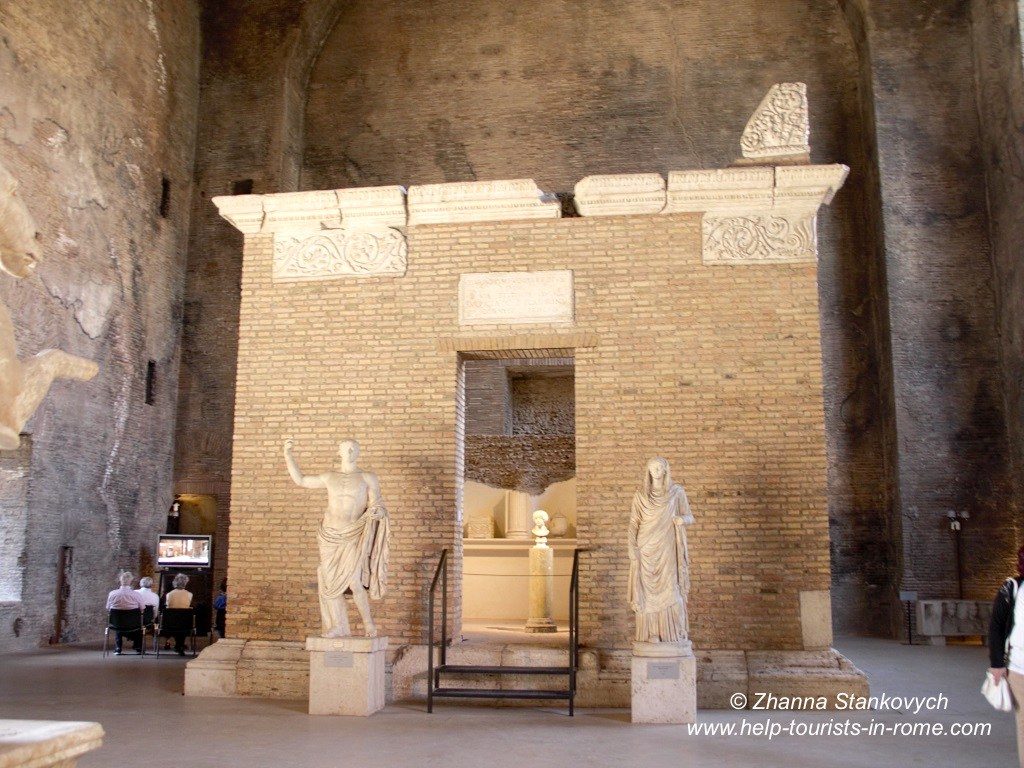
Other parts of the baths are used as a museum and for changing exhibitions. Among other things, you can see Roman and Greek art, as well as tombs. Another museum area is dedicated to the development of the Latin language.
Owners of the Roma Pass or the Omina card can visit all 4 museums by using only one free entry voucher.
Useful information
How to get to the Baths of Diocletian in Rome
By public transport you can reach the Baths of Diocletian via Metro A and B at Termini. From there you will only have to walk for about 300 meters.
Admission fees to the Baths of Diocletian in Rome
Admission fees to just one museum are 10 euros and 13 euros in case of special exhibitions. The combined ticket rate for all 4 museums is 12 euros and 15 euros when exhibitions take place. Young people up to the age of 18 enjoy free admission, students from the EU up to the age of 25 pay reduced entry fees of 5 euros for one museum or 6 euros for the combined ticket, plus 3 euros for special exhibitions. Admission is free for everyone on the 1st Sunday of the month.
Opening hours of the Baths of Diocletian in Rome
All four museums are open from Tuesday to Sunday from 9 am to 7:30 pm. On Mondays the museums are always closed, on the 24th and the 31st of December the museum areas close at 6 pm. All Roman National Museums are closed on the 1st of January and the 25th of December.
9. Top 10 Rome Museums: The Museum of Contemporary Art in Rome
Even though Rome is mostly known for its ancient architecture and historical artefacts and sights, you can also find modern and contemporary art in the Italian capital. MAXXI in Rome, the national museum of art of the 21st century, was founded in 2009 and deals with contemporary architecture and art. It is an architectural masterpiece of interlocking concrete slabs, large glass fronts and free-floating black stairs.
The National Museum of the Arts of the XXI. century in Rome has a considerable collection of works by Italian and international artists of the last 4 decades. The MAXXI in Rome also works in partnership with the Google Cultural Institute, surprising its visitors with the latest technology and stunning visuals.
Useful information
How to get to the MAXXI in Rome
To get to the national museum of art of the 21st century take metro line A and get off at Flaminio. Afterwards take the tram line 2 and stay on it until the stop Apollodoro. The buses 53, 168, 280 and 910 also bring you to the MAXXI.
Admission fees to the MAXXI in Rome
Admission to the MAXXI in Rome is 12 euros for adults. People under 30 only pay 9 euros admission fee. Admission is free for children under 14 years old, as well as people with disabilities and their accompanying person.
Opening hours of the MAXXI in Rome
The opening hours of the MAXXI in Rome are as follows: Tuesday to Sunday from 11 am to 7 pm. On Thursdays doors remain open until 10 pm. Every Monday, on the 1st of May and the 25th of December the museum stays closed.
10. Top 10 Rome Museums: Trajan’s market in Rome
The Museum of Imperial Fora in Trajan’s market in Rome, created in the 2nd century together with the Forum of Trajan, is the first museum of ancient architecture and shows reconstructions of the architectural and sculptural decoration of the forums with original fragments, plaster casts and modular additions.
Naturally, the building has undergone several changes since the imperial era and was used for different purposes, most recently as a Convention. At the beginning of the 20th century, many of these changes were reversed and the original architecture was brought to light again.
Trajan’s market often houses temporary exhibitions.
Useful information
How to get to Trajan’s market in Rome
The museum entrance is located on Via IV Novembre 94. By foot you will reach the entrance starting from Piazza Venezia and the Imperial Fora via Via Magnanapoli, which starts behind the pillar of Trajan. Bus stops are on Piazza Venezia. Two metro stations are also nearby: Colosseo and Cavour.
Admission fees to Trajan’s market in Rome
For adults admission to Trajan’s market is 15 euros. reduced admission is 13 euros and is available for young people between 6 and 18 years old, as well as owners of the Roma Pass, once all free admission vouchers are used up. Children under the age of 6, school classes and inhabitants of the twin city Paris can visit Trajan’s market for free.
Opening hours of Trajan’s market in Rome
Trajan’s market in Rome is open daily from 9:30 am to 7:30 pm. On the 24th and the 25th of December the market closes at 2 pm already. The ticket office closes one hour earlier. The market is closed on the 1st of January, the 1st of May and the 25th of December.
Social media
Become part of the HelpTourists community on Facebook! In our private group you can exchange ideas with other Rome lovers. Follow us on Instagram and Pinterest and get regular inspiration and insider tips for your next Rome trip!
Pin information about the best museums in Rome on Pinterest
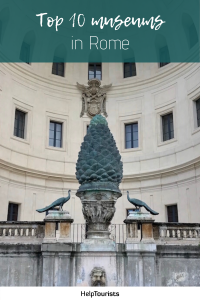
This article contains referral links. There are no additional costs for you, but thanks to these links we get a small commission. This enables us to continue to work diligently on the website and always have the latest information from Rome ready for you. Thank you for your support!







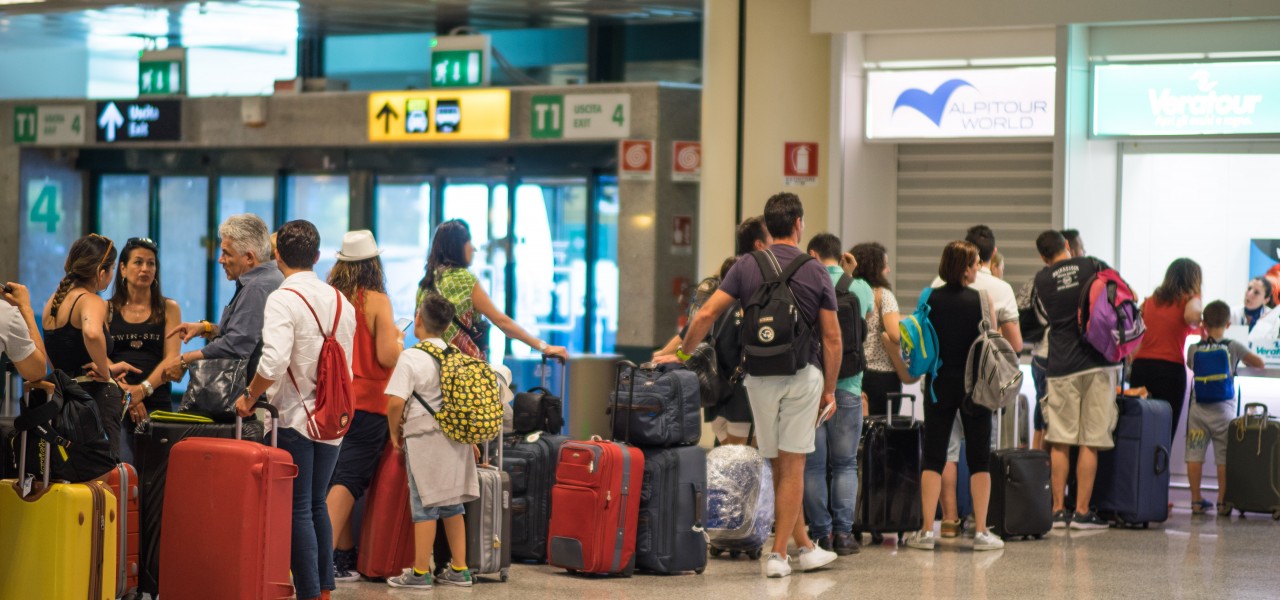
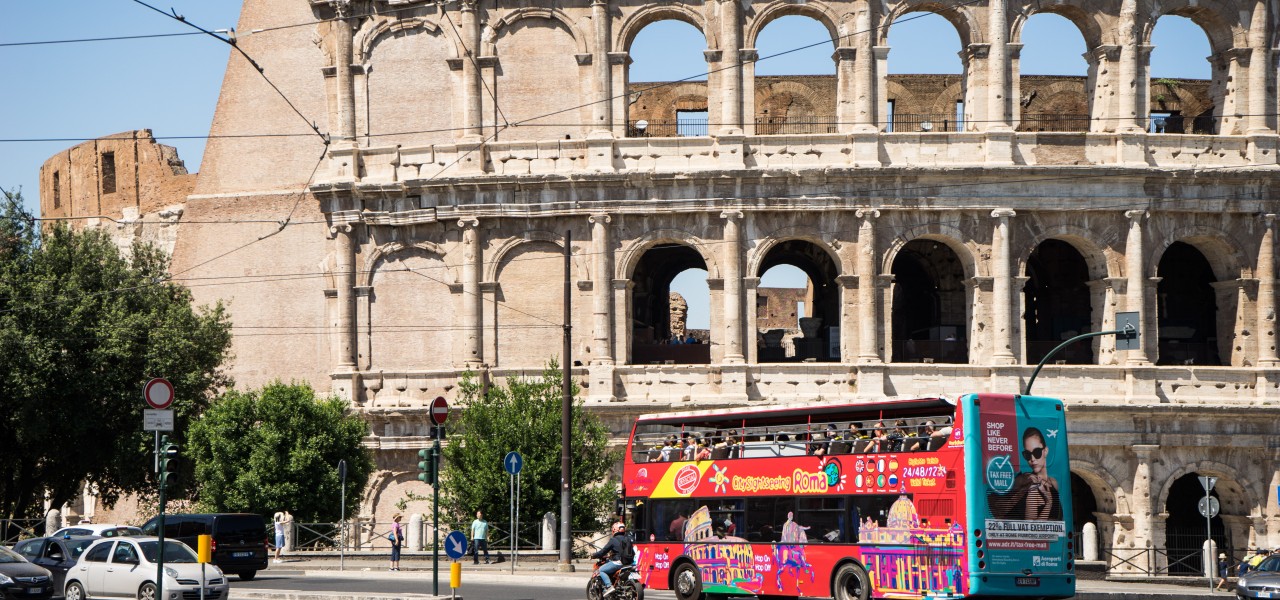
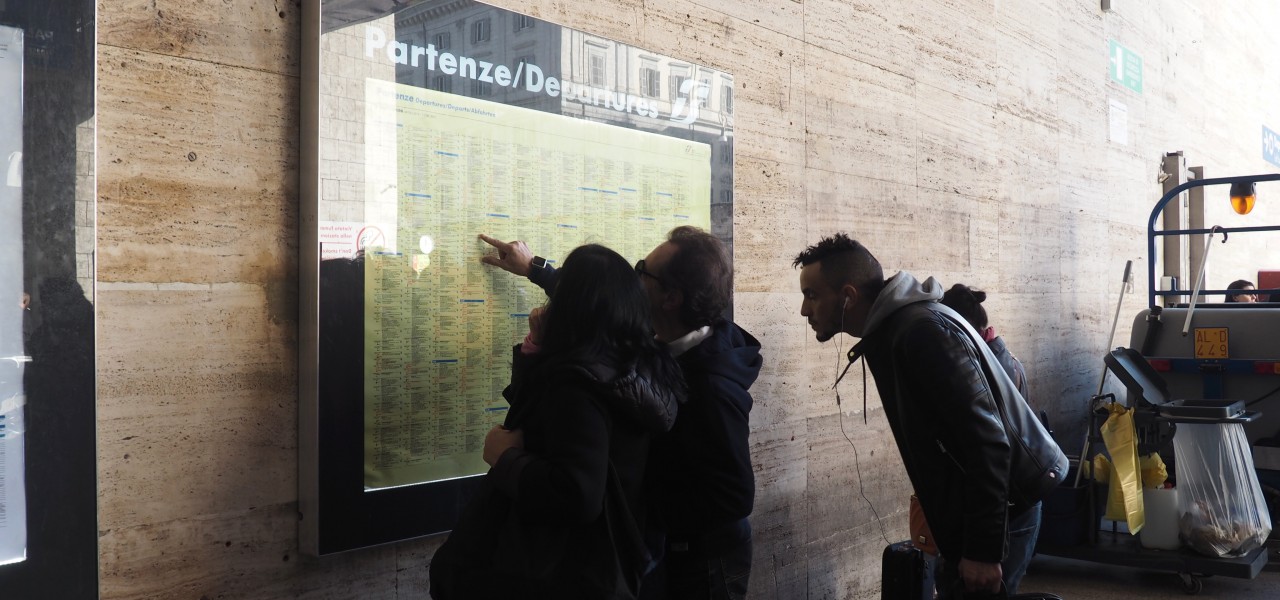
It all looks really good!!